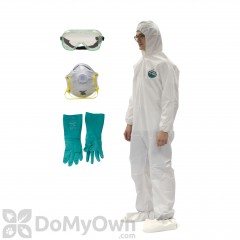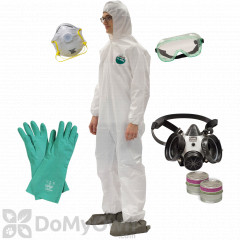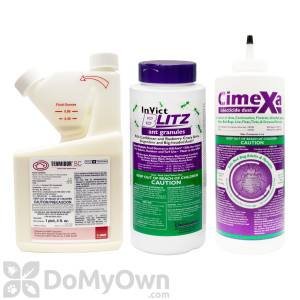Before implementing the following steps, please verify the ant species by reading our Crazy Ant: Identification & Biology page
Step 1) Inspection: Attempt to locate entry points and colonies
Crazy Ants are among the most difficult to control within a structure because of their erratic, jerky movements and reluctance to form trails. They will either be seen in trails or wandering "aimlessly" on walls or countertops. To encourage trail formation, try the Honey & Peanut Butter Bait Method. Once you are able to visually follow the trails with your eye, try to see where the ants are entering the structure, and take note of where you suspect the nest or colony may be located.
Step 2) Treat all existing known colonies.
Drench all outdoor mounds with Cyper WSP or Demon WP Insecticide. Indoor colonies should be dusted using a hand duster and Delta Dust Insecticide.
Crazy Ant mounds are not readily visible above ground. Possible nesting sites for Crazy Ants include: soil beneath landscape timbers, logs, mulch firewood and other debris. Crazy Ants may also nest inside rotting wood and tree holes.
Step 3) Spray & Dust Treatments
Spray Treatments : In addition to treating the colony, do a thorough inspection inside and outside for any additional trails, entry points, and hiding places. Each location where Crazy Ant activity is sighted or suspected should be treated with a Cypermethrin residual product like Cyper WSP, or Demon WP Insecticide to kill any existing ants while preventing new colonies from budding. For outdoor spraying: Spray a good barrier around the home. A fan spray that is at least 3 feet high on the side of the building and 3 to 6 feet out on the ground will provide excellent protection.
Dust Treatments: Crazy Ants are known to respond very weakly to baits, so indoor colonies should instead be treated with a residual dust pesticide. Dust underneath baseboards, and inside cracks, crevices, and voids where activity is suspected with Delta Dust Insecticide. This is easy to apply using a professional Hand Duster.
Step 4) Baiting
Baiting for Crazy Ants has limited results, so it is always better to treat trails, entry points, and the colony directly with a spray or dust. Keep in mind that you do need to use either a bait or contact insecticide for indoor control, but not both. (Sprays and dusts contaminate baits and render them ineffective). If you must bait, a combination of 2 or 3 of the following baits will give Crazy Ants a variety to choose from even if they suddenly switch food sources or preferences. Be sure to read the product label for tips on usage, application rate, and bait placement, etc.
Antack Liquid Ant Bait- A balanced formulation that ants need and desire. The bait will kill the entire colony.
Maxforce Ant Bait Stations- Maxforce Ant Bait Stations start to kill ants in just six hours, and tests show 90% population reductions in just four days.
Read more on Ant Baiting Tips
Read more on The Advantage of Using Ant Baits
Additional Methods for Ant Prevention & Control
After you have applied the appropriate pesticide chemicals, these additional non chemical methods will help you to maintain control and prevent future ant infestations:
- Practice good sanitation.
- Limit food preparation and consumption to one or two areas of the home that are cleaned daily. Ants will be less likely to invade if food sources (like crumbs and spills) are not available.
- Eliminate gaps and cracks in the foundation, baseboards, window frames, and door frames with caulk or other appropriate material to eliminate ant entryways.
- Materials such as stacked or piled lumber, stones, bricks, leaf litter, heavy mulch, and other debris that serve as potential ant harborages should be removed as far from the structure as possible.
- Trim the branches of trees, shrubs, and other vegetation that may serve as ant highways so they do not touch the structure.
- Repair leaky pipes and faucets.
Products:
All Ant Control products



